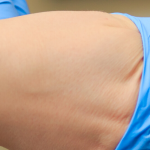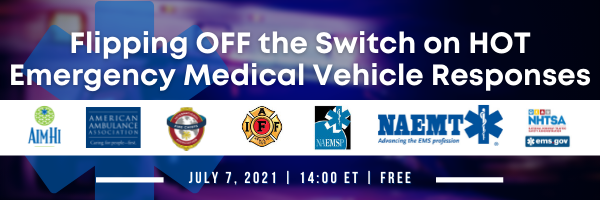This week, the Safer Federal Workforce Task Force released new guidance on COVID-19 workplace safety protocols for Federal contractors and subcontractors. On September 9, President Biden signed Executive Order 14042, Ensuring Adequate COVID Safety Protocols for Federal Contractors, which directed executive departments and agencies to ensure that all federal contractors and subcontractors comply with all guidance published by the Task Force. These workplace safety protocols will apply to all covered contractor and subcontractor employees in covered contractor workplaces even if they are not working on Federal Government contracts.
Overview of Workplace Safety Protocols for Federal Contractors and Subcontractors
Pursuant to the guidance issued this week, and in addition to any requirements or workplace safety protocols that are applicable because a contractor or subcontractor employee is present at a Federal workplace, Federal contractors and subcontractors with a covered contract will be required to conform to the following workplace safety protocols:
- COVID-19 vaccination of covered contractor employees, except in limited circumstances where an employee is legally entitled to a medical or religious accommodation;
- Compliance by individuals, including covered contractor employees and visitors, with the Guidance related to masking and physical distancing while in covered contractor workplaces; and
- Designation by covered contractors of a person or persons to coordinate COVID-19 workplace safety efforts at covered contractor workplaces.
The guidance provides details regarding who is included under these new rules. Under the latest guidance, a “Covered Contractor Employee” means any full-time or part-time employee of a covered contractor” working on” or “in connection with” a covered contract or working at a covered contractor workplace. This includes employees of covered contractors who are not themselves working on or in connection with a covered contract, except for those employees who only perform work outside the United States or its outlying areas. This means that all ambulance service employees, who perform work related to or in connection with the contract, such as dispatchers, human resource and billing personnel, training staff, etc. are subject to the new requirements. This includes employees working from remotely or from home, who are performing work in connection with the contract.
Under the guidance, a “Covered Contractor Workplaces” are locations controlled by a covered contractor at which any employee of a covered contractor working on or in connection with a covered contract is likely to be present during the period of performance for a covered contract. This includes those workplaces such as ambulance stations, administrative offices, etc.
Vaccination of Covered Contractor Employees
Covered contractors must ensure that all their covered employees are fully vaccinated for COVID-19 unless the employee is legally entitled to an accommodation. Covered contractor employees must be fully vaccinated no later than December 8, 2021. The guidance detailed that vaccination is required of all employees, even if they have previously been infected with COVID-19.
Proof of COVID-19 Vaccination
Under this guidance, the contractor or subcontractor must review the covered employee’s documentation to prove vaccination status. The guidance identifies the list of acceptable documents an employee can furnish to prove vaccination, including:
- Copy of Immunization Record from a healthcare provider or pharmacy
- Copy of the COVID-19 Vaccination Record Card (CDC Form MLS-319813_r, published 9/3/2020)
- Copy of Medical Records documenting the vaccination
- Copy of Immunization Records from a public health or State Immunization Information System
- Copy of any other official documentation verifying vaccination with information of:
- Vaccine name
- Date of administration
- Name of healthcare professional or clinic site administering the vaccine
*Digital copies of these records are acceptable (jpg, scanned PDF, etc.)
The guidance specified that a signed attestation by the employee is not acceptable proof of vaccination. Additionally, the guidance stated that recent COVID-19 antibody tests do not satisfy the requirements under these rules.
Masking and Physical Distancing While in Covered Contractor Workplaces
Covered contractors must ensure that all individuals, including covered contractor employees and visitors, comply with published CDC guidance for masking and physical distancing at a covered contractor workplace. The guidance provided more details on these masking and physical distancing requirements. These include requiring unvaccinated individuals to mask indoors and in certain outdoor settings regardless of COVID-19 transmission levels. Contractors are required to monitor the community transmission levels on the CDC COVID-19 Data Tracker County View website on a weekly basis.
COVID-19 Coordinator Designation
Covered contractors must designate a person or persons to coordinate implementation of, and compliance with, these workplace safety protocols at covered contractor workplaces. Their responsibilities to coordinate COVID-19 workplace safety protocols may comprise some or all of their regular duties. This individual can be the same person who is designated under other state or local COVID-19 safety requirements.
Finally
The guidance makes it clear that the rules applicable to all federal contractors and supersedes any state or local rules or regulations that are contrary to these provisions. That means that any rules that prohibit mask or other COVID-19 related safety mandates, or otherwise contradict the rules under this guidance will not excuse a federal contractor’s obligations under these rules.
The guidance will be finalized by the Office of Management & Budget in the coming days. In the meantime, if you have any questions or need assistance, contact the AAA at hello@ambulance.org.









.png)






